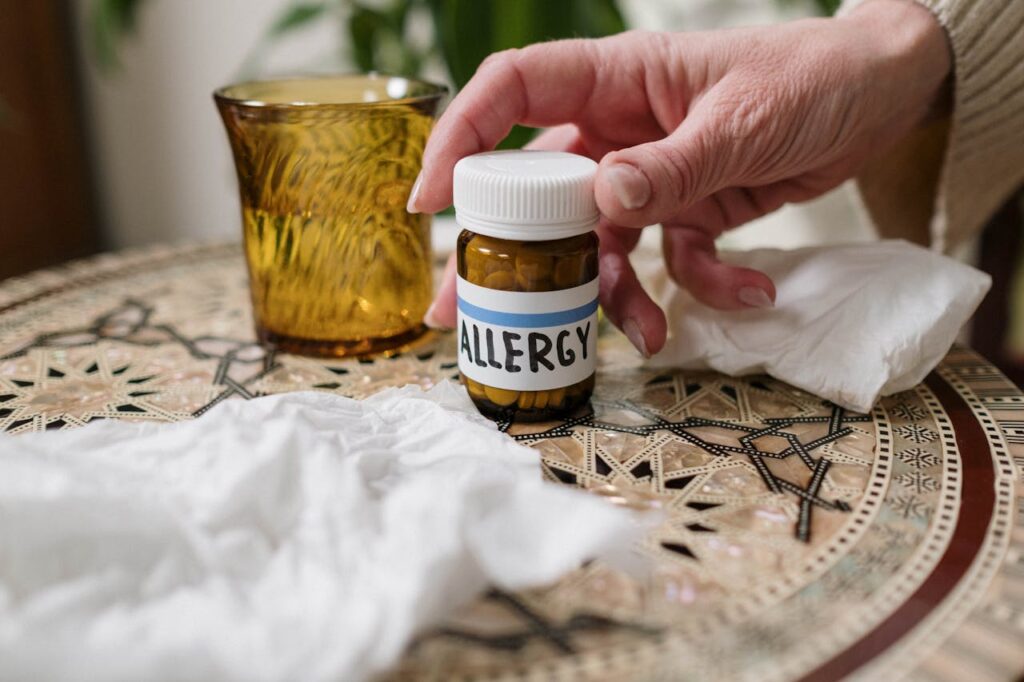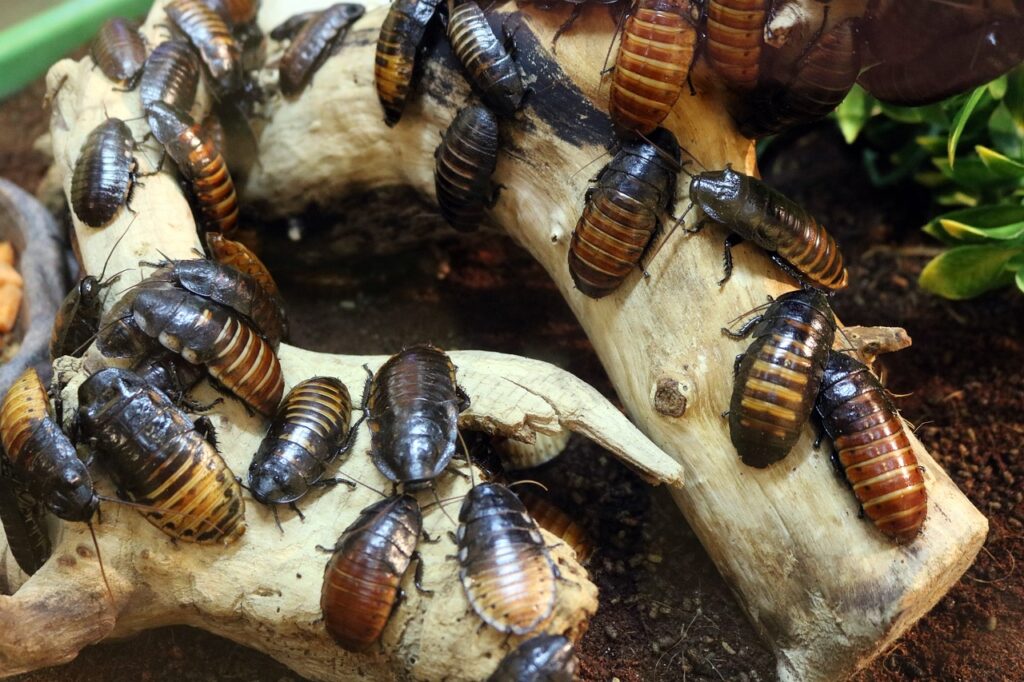Are you aware of the unseen risks that roaches can pose to your health? These common household pests may seem harmless, but they can actually harbor a range of harmful bacteria, allergens, and pathogens that can negatively impact your well-being. In this article, we will delve into the hidden dangers of roaches and uncover the threats they pose.
Roaches are known to carry and transfer disease-causing pathogens such as salmonella, E. coli, and even parasitic worms. The bacteria they carry can contaminate your food, utensils, and surfaces, leading to food poisoning or other illnesses. Additionally, roach droppings and shed skin can trigger allergies and asthma in susceptible individuals, causing respiratory issues and worsening of existing conditions.
It is crucial to understand the health risks associated with roaches, especially if you have a roach infestation in your home. By learning more about their dangers, you can take proactive measures to protect yourself and your family from these hazards.
Join us as we delve deeper into the hidden dangers of roaches and discover the proactive steps you can take to safeguard your health.
Common Health Risks Associated with Roaches
Roaches are not just unwelcome guests in your home; they can also bring along a host of health risks. One of the primary concerns with roaches is their ability to carry and transfer disease-causing pathogens. These pests are known to be carriers of bacteria like salmonella and E. coli, which can lead to serious illnesses when transmitted to humans through contaminated food or surfaces.
In addition to bacterial infections, roaches can also harbor parasitic worms that pose a threat to human health. These internal parasites can cause a range of symptoms, from gastrointestinal issues to more severe conditions if left untreated. It’s essential to be aware of these potential health risks associated with roaches, especially if you suspect an infestation in your living space.
The presence of roaches in your home can also exacerbate existing health conditions, particularly for individuals with allergies or asthma. Roach droppings and shed skin contain allergens that can trigger allergic reactions and asthma attacks in sensitive individuals. These respiratory issues can be further aggravated by the constant exposure to roach allergens, making it crucial to address any infestation promptly.
Roach-Borne Diseases and Their Symptoms
Roaches are not just a nuisance; they can be carriers of various diseases that pose a significant threat to human health. Some of the common diseases transmitted by roaches include salmonellosis, caused by the bacterium salmonella, which leads to symptoms like diarrhea, fever, and abdominal cramps. Another concerning illness is E. coli infection, which can result in severe gastrointestinal symptoms and even kidney failure in severe cases.
Apart from bacterial infections, roaches can also transmit parasitic diseases such as giardiasis and cryptosporidiosis, which affect the digestive system and can lead to symptoms like diarrhea, nausea, and dehydration. These diseases are particularly dangerous for vulnerable populations such as children, the elderly, and individuals with weakened immune systems. Understanding the symptoms of these roach-borne diseases is crucial for early detection and treatment.
In addition to bacterial and parasitic infections, roaches can also carry viruses like poliovirus and hepatitis A, further increasing the risk of illness transmission. The presence of roaches in your living environment should not be taken lightly, as these pests can serve as vectors for a range of infectious diseases that can have serious consequences for your health. Taking proactive measures to eliminate roaches is essential for safeguarding your well-being.
Allergies and Asthma Triggered by Roaches
Beyond the risk of disease transmission, roaches can also trigger allergic reactions and exacerbate asthma symptoms in susceptible individuals. Roach allergens, found in their droppings, saliva, and shed skin, can act as potent triggers for allergic responses in some people. Common symptoms of roach allergies include sneezing, nasal congestion, skin rashes, and itchy eyes.
For individuals with asthma, exposure to roach allergens can lead to asthma attacks and worsen respiratory symptoms. The inhalation of roach allergens can inflame the airways, making it difficult to breathe and increasing the risk of asthma exacerbations. This is especially concerning for children with asthma, as roach exposure can have a significant impact on their lung function and overall well-being.
It is essential to address any signs of roach infestation promptly to minimize the risk of allergic reactions and asthma flare-ups. Implementing effective pest control measures and maintaining a clean living environment can help reduce exposure to roach allergens and create a healthier indoor space for you and your family.

The Impact of Roaches on Food Contamination
Roaches are not just unsightly pests; they can also contaminate your food and kitchen surfaces with harmful bacteria and pathogens. These pests are known to feed on a wide range of organic matter, including food scraps, grease, and even decaying matter, making them potential carriers of foodborne illnesses. When roaches come into contact with your food or food preparation areas, they can leave behind traces of bacteria that can lead to food poisoning.
The bacteria carried by roaches, such as salmonella and E. coli, can multiply rapidly in food that has been contaminated, increasing the risk of illness when consumed. Symptoms of foodborne illnesses caused by roach contamination include nausea, vomiting, diarrhea, and abdominal pain. In severe cases, food poisoning can lead to dehydration and require medical intervention.
To prevent roaches from contaminating your food, it is essential to store food items in sealed containers, clean up spills promptly, and maintain a sanitary kitchen environment. Regularly inspecting your pantry, cabinets, and appliances for signs of roach activity can help you identify and address any infestations before they escalate. By taking proactive steps to protect your food from roach contamination, you can reduce the risk of foodborne illnesses and ensure the safety of your meals.
Roaches as Carriers of Bacteria and Pathogens
Roaches are not just a nuisance; they are also carriers of a wide range of bacteria and pathogens that can pose serious health risks to humans. These pests can pick up bacteria like salmonella, E. coli, and Staphylococcus aureus from contaminated environments and transfer them to food, utensils, and surfaces in your home. The presence of these harmful bacteria can lead to foodborne illnesses and other infections when ingested or come into contact with your skin.
In addition to bacterial pathogens, roaches can also carry viruses like poliovirus and hepatitis A, further increasing the risk of disease transmission. These pathogens can survive on roach bodies and in their feces for extended periods, making it crucial to eliminate roach infestations promptly to prevent the spread of infectious diseases. Understanding the role of roaches as carriers of harmful bacteria and pathogens is essential for protecting your health and well-being.
The transmission of bacterial and viral pathogens by roaches can have serious consequences for human health, particularly for individuals with weakened immune systems or underlying health conditions. By reducing the risk of roach infestations in your living environment and maintaining proper hygiene practices, you can minimize the likelihood of exposure to these harmful pathogens and safeguard your health.
Roaches and Their Connection to Respiratory Issues
Roaches can have a significant impact on respiratory health, particularly for individuals with allergies or asthma. The allergens present in roach droppings, saliva, and shed skin can trigger allergic reactions and exacerbate respiratory symptoms in sensitive individuals. Common respiratory issues associated with roach exposure include coughing, wheezing, chest tightness, and shortness of breath.
For individuals with asthma, exposure to roach allergens can lead to asthma attacks and worsen lung function. The inhalation of roach allergens can cause inflammation in the airways, making it difficult to breathe and increasing the risk of asthma exacerbations. Children, in particular, are at a higher risk of experiencing respiratory issues due to roach exposure, as their developing lungs are more susceptible to irritants.
To protect your respiratory health from the effects of roach allergens, it is essential to implement effective pest control measures and maintain a clean living environment. Regularly cleaning and vacuuming your home, sealing cracks and crevices, and eliminating sources of moisture can help reduce roach populations and minimize exposure to allergens. By taking proactive steps to address roach infestations, you can create a healthier indoor environment for you and your family.
Roach Infestations and Their Effects on Mental Well-Being
Roach infestations can have a significant impact on mental well-being, causing stress, anxiety, and feelings of unease in affected individuals. The presence of roaches in your home can lead to a sense of invasion and contamination, triggering negative emotions and affecting your overall quality of life. The constant worry about roach sightings, infestation spread, and potential health risks can take a toll on your mental health.
Living in a roach-infested environment can also lead to feelings of embarrassment and shame, as the presence of pests is often associated with poor hygiene and neglect. The stigma attached to roach infestations can further compound the psychological distress experienced by individuals dealing with these pests. It is essential to address roach infestations promptly to restore a sense of control and well-being in your living space.
Seeking professional help to eliminate roaches and implementing preventive measures can alleviate the mental burden associated with infestations. Creating a clean, pest-free environment can improve your mental well-being and create a sense of comfort and security in your home. By taking steps to address roach infestations and maintain a healthy living space, you can protect both your physical and mental health.
Preventive Measures to Keep Roaches at Bay
To prevent roaches from posing a threat to your health, it is essential to implement effective preventive measures that keep these pests at bay. One of the key strategies for roach control is maintaining a clean and hygienic living environment. Regularly cleaning and disinfecting your home, especially the kitchen and areas prone to moisture, can help deter roaches from infesting your space.
Sealing cracks and crevices in walls, floors, and around plumbing fixtures can prevent roaches from entering your home and establishing hiding spots. Using caulk or weatherstripping to seal potential entry points can create a barrier that roaches are less likely to breach. Additionally, repairing any leaks or sources of moisture can help eliminate attractive conditions for roaches to thrive.
Storing food in airtight containers and promptly cleaning up spills can reduce the risk of roach infestations in your kitchen and pantry. Roaches are attracted to food sources, so eliminating their access to sustenance can discourage them from taking up residence in your home. Regularly inspecting your living space for signs of roach activity, such as droppings, egg cases, or musty odors, can help you detect infestations early and take swift action.

Conclusion: Importance of Professional Roach Control Measures
In conclusion, the hidden dangers of roaches go beyond mere nuisance; these pests can pose serious threats to your health and well-being. From transmitting disease-causing pathogens to triggering allergic reactions and asthma, roaches can have a significant impact on your physical and mental health. Understanding the health risks associated with roaches is crucial for taking proactive measures to protect yourself and your family.
To safeguard your health from the dangers of roaches, it is essential to implement preventive measures that keep these pests at bay. Maintaining cleanliness, sealing entry points, and eliminating food sources are key steps in preventing roach infestations in your home. In cases of severe infestations, seeking professional pest control services can help effectively eliminate roaches and create a healthier living environment.
By staying informed about the hidden dangers of roaches and taking proactive steps to address infestations, you can protect your health and well-being from the threats posed by these common household pests. Remember that early detection and prompt action are key to preventing roaches from compromising your living space and ensuring a safe and healthy home for you and your loved ones.

